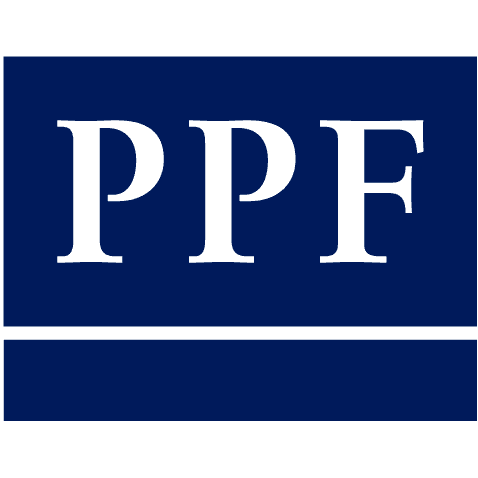Type N.V. Total equity €5.680 billion (2015) Number of employees 85,000 (2015) Headquarters Amsterdam, Netherlands Founded 1991 | Revenue €6.292 billion (2015) Owner Petr Kellner (98.92%) Total assets 21.61 billion EUR (2015) Founder Petr Kellner Net income 352 million EUR (2015) | |
 | ||
Key people Petr Kellner (Chairman)
Jean-Pascal Duvieusart (CEO) Subsidiaries O2 Czech Republic, CETIN, Air Bank, Sotio | ||
PPF is a privately held international financial group. It operates in the area of consumer financing, retail banking and insurance. It develops its activities in many countries. Its headquarters are located in the Netherlands. The largest shareholder of PPF is Petr Kellner (98.94%).
History
The history of PPF dates back to the early 1990s. After the Velvet Revolution in Czechoslovakia the government led by Marián Čalfa decided to gradually privatize state-owned companies. The legal framework was set by Act No. 92/1991 enacted on 26 February 1991. One of the agreed privatization methods was voucher privatization. Czechoslovak citizens who decided to take part in the voucher privatization had two options, either bid for shares in the privatized companies by themselves or exchange in advance their vouchers for shares in privatization funds, whose managers would make the investment decisions by themselves.
In September 1991 Teplice-based company Správa prvního privatizačního fondu (literally Management of the First Privatization Fund) was founded, its registered capital was only CSK 0.1 million (USD 3.3 thousand). Petr Kellner became its chairman, other board members were managing director Milan Vinkler and Petr Joudal. All of them were already entrepreneurs. In February 1991 Kellner founded company ANO with Joudal and company WIKA with Vinkler.
To succeed in the privatization, PPF needed money for an advertising campaign. It obtained the capital from state-owned glassworks Sklo Union, which was also based in Teplice. Štěpán Popovič, board member of Sklo Union, formally introduced Kellner to the board, which in turn approved a CSK 20 million investment in the form of capital increase and debt financing. In November 1991 registered capital of PPF was increased to CSK 6.6 million (USD 226 thousand) and Joudal was replaced by Jaroslav Přerost, who was at the time CFO of Sklo Union.
In December 1991 PPF set up five investment funds:
Registered capital of each fund was CSK 0.1 million. PPF did not establish any fund focused on Slovakia.
In March 1992 registered name of the management company was shortened to První privatizační fond (First Privatization Fund), a month later extraordinary general meeting elected Popovič to its board.
Following the advertising campaign at the outset of the first wave of voucher privatization, PPF funds gathered 1.4% of all investment points and PPF became eleventh largest management company in terms of acquired privatization points. In the second wave that took place after dissolution of Czechoslovakia PPF funds gathered 2.1% of all investment points (ninth largest group).
In 1994 shareholders of the four largest funds from the first wave agreed a merger, the smallest Regional Investment Fund was later liquidated. In 1996 the merged fund acquired 20% stake in Česká pojišťovna (ČP), the largest Czech insurance company. ČP had a profitable insurance business, however its two subsidiary banks were losing billions of Czech crowns, decreasing the ownership equity of ČP.
On 17 June 1996 the first wave fund was transformed to a standard holding corporation (PPF IH). The transformation took place just two weeks before 1 July 1996, when the Act No. 142/1996 made the transition to a standard corporation much more complicated. As a result, PPF IH was not subject to regulation of investment funds anymore. To push the transformation through, PPF used cross-shareholdings. For example, industrial company TMP where PPF was the largest shareholder acquired in March 1996 shares of the fund, only to sell them for a lower price after the extraordinary general meeting losing CZK 96 million.
On 19 June 1996 the Minister of Finance Ivan Kočárník hosted a key meeting of ČP shareholders (NPF, PPF, IPB, ČSOB and KB). National Property Fund (30% stake) was represented by Minister of Privatization Roman Češka (ODA), governor of the Czech National Bank Josef Tošovský was also present. It was agreed that PPF should manage ČP and IPB its ailing subsidiary banks. PPF and IPB also got an option to purchase ČSOB shares, subject to condition that audited ČP profit for calendar year 1997 is positive. In 1998 PPF and IPB exercised the option and the state lost majority in ČP (the state was the largest shareholder of ČSOB and KB).
On 21 March 2000, Libor Procházka (IPB) agreed with Petr Kellner to sell ČP shares controlled by IPB to Dutch-based company CESPO. The contractual penalty amounted to 75% of the purchase price (CZK 1.6 billion). IPB transferred the shares too late and therefore CESPO paid only 25% of the agreed price. As a result, PPF had a majority interest in ČP. IPB went into forced administration in June 2000 and was sold to ČSOB. ČSOB later took PPF to the court, claiming the price of ČP shares was too low, however it lost the case.
In September 2000 registered capital of PPF IH was decreased by 90% and CZK 1767 million was distributed among its shareholders (CZK 500 per share, meaning CZK 15000 per voucher book).
